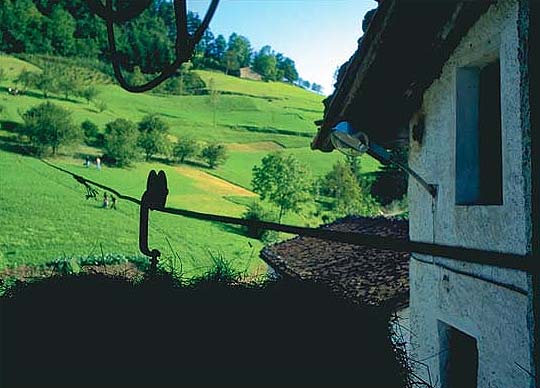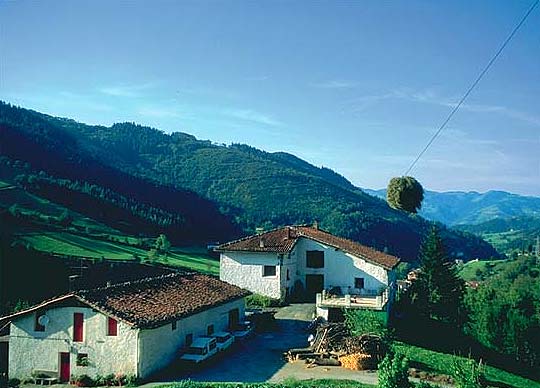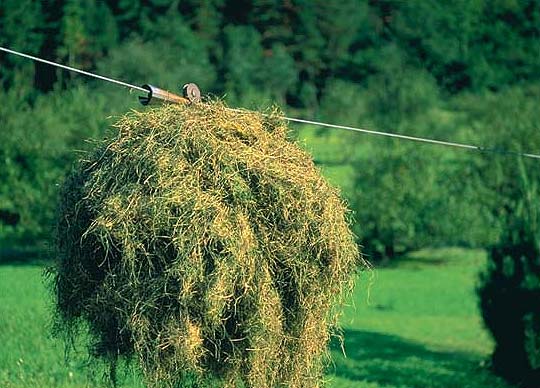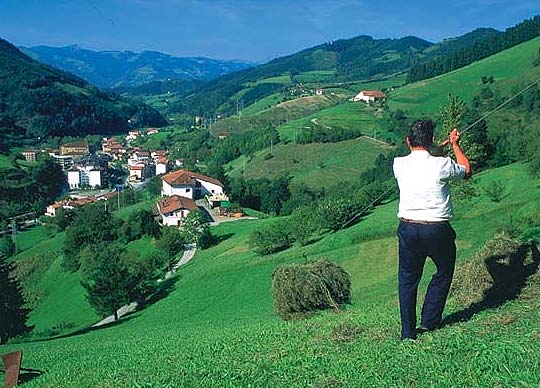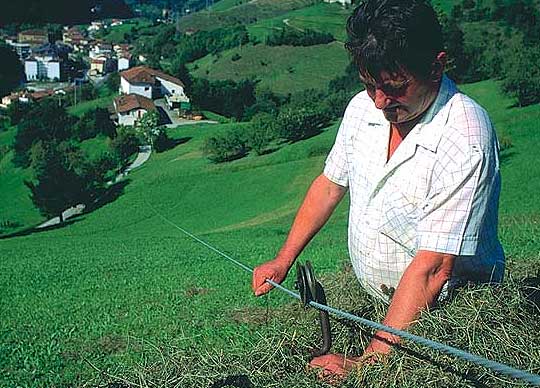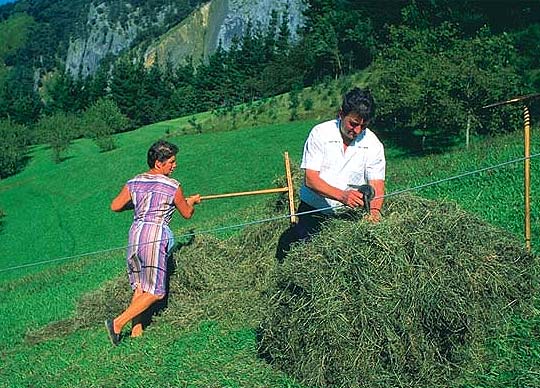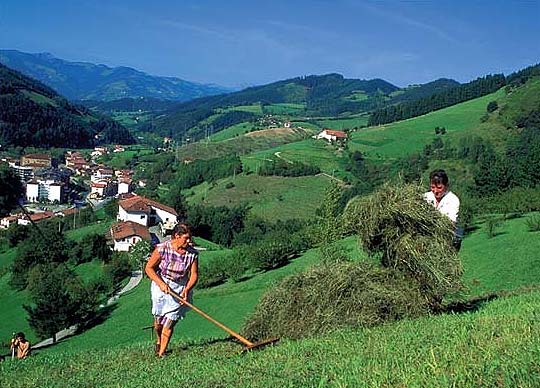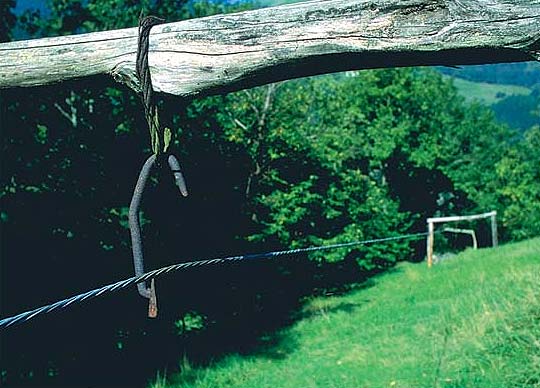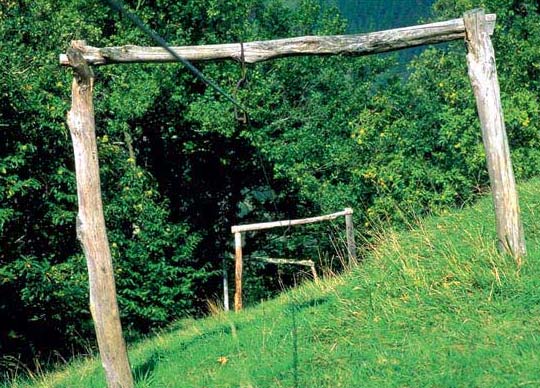Cable
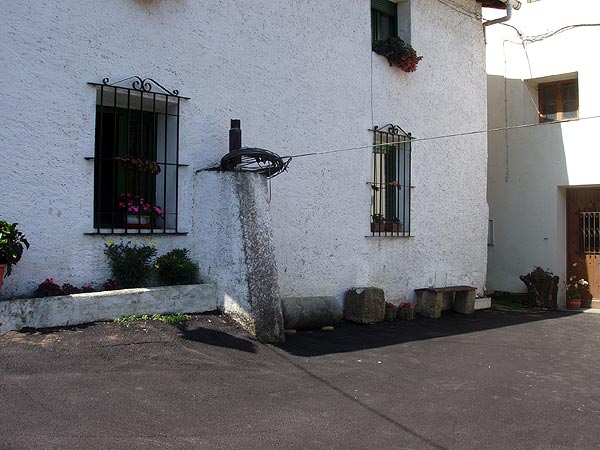
This was used in very few towns, as the system is related with the orography. However, in Ataun, it was of great importance and extremely useful. Nowadays, it is used for transporting grass. In a study carried out in 1996, 197 cables and pulleys were counted; today, there remain 32, only 17 of which are used. What happened was that in the 1950s farmers were introduced to the tractor systems and, when pinewood was processed industrially, the cable and pulley were used less and less.
The cable and pulley is a system of transport created to make work on the farm easier. Ataun is in a valley through which the River Agauntza and its tributaries run and there are steep slopes within a short distance. Because of the rugged terrain, most farmhouses are built at the foot of the mountains and consequently, districts are formed but the grass and the leaf litter has to be brought down from the mountains. In the past, the necessary raw materials were brought down on horses or on the farmer’s back or in whatever way possible as there were no trails for carts at that time. And this is how it was until the 20 th century when, in the 1920s, the people of Ataun began to use the cable and pulley to make farm work easier. The cable and pulley adapted perfectly to the needs of the people of Ataun with its steep slopes until it finally became the main system of transport of agricultural products. The cable and pulley was so successful that the trade of cable-maker was created.
